#handmade by archer inventive
Photo
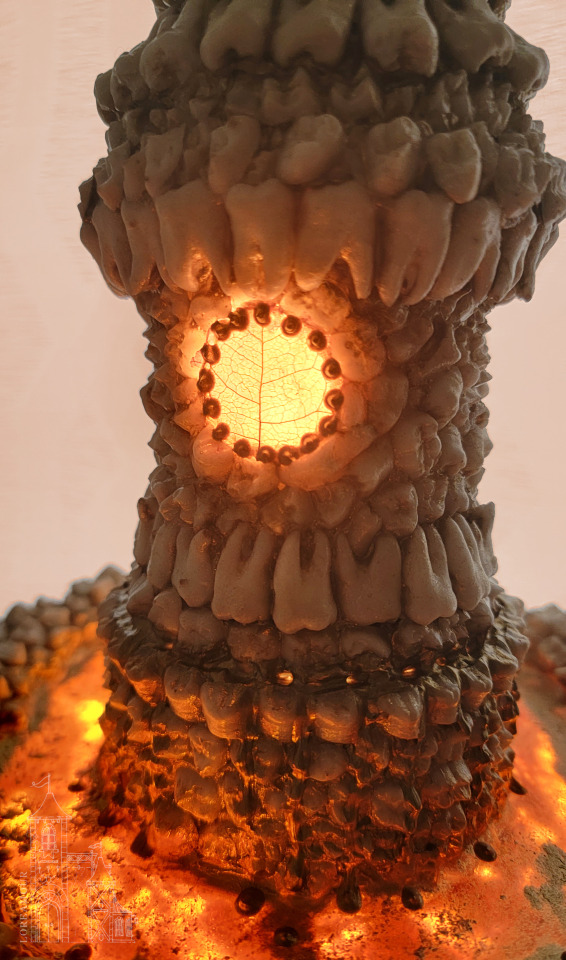


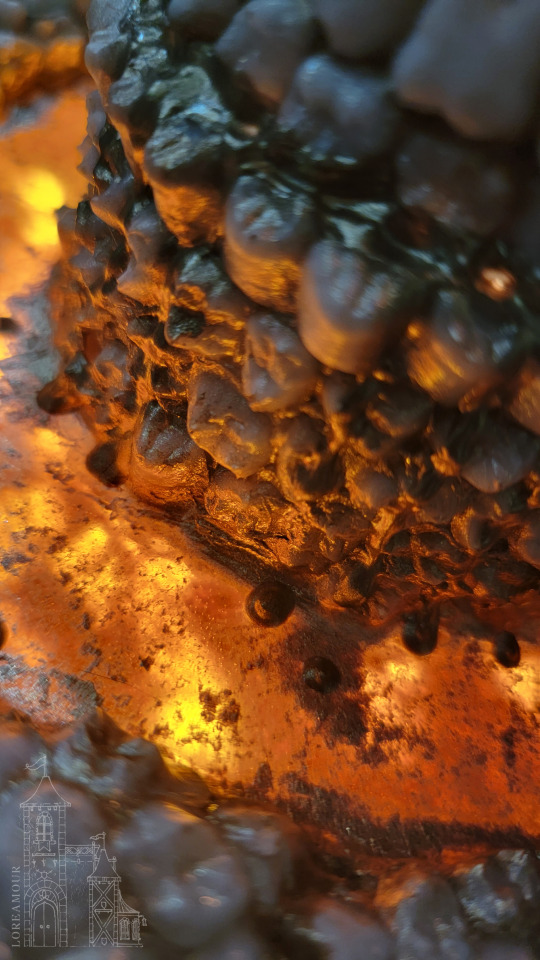


The Tooth Tower 🦷
Ever wonder what the tooth fairy does with your teeth? Well, this Tiny Tower may answer that very question.
With fillings being turned to mortar and the rest used to fill the boiling moat, this new addition to the Tale of the Tiny Towers scavenger hunt at Loreamour events took quite some time to complete, and was made using molds from my very own wisdom teeth.
You can find the other towers on the Loreamour Patreon page, or at future Loreamour events.
If you want to see how this tower was created, we'll be posting a Patreon exclusive work-in-progress video next week. https://www.patreon.com/loreamour
Have a spooky Sunday all!
#tooth tower#tale of the tiny towers#tooth fairy#loreamour#handmade by archer inventive#plus 1 to wisdom#wisdom teeth#resin#scavenger hunt#adventure#spooky stuff#mystic masquerade#dark fairytales
470 notes
·
View notes
Photo
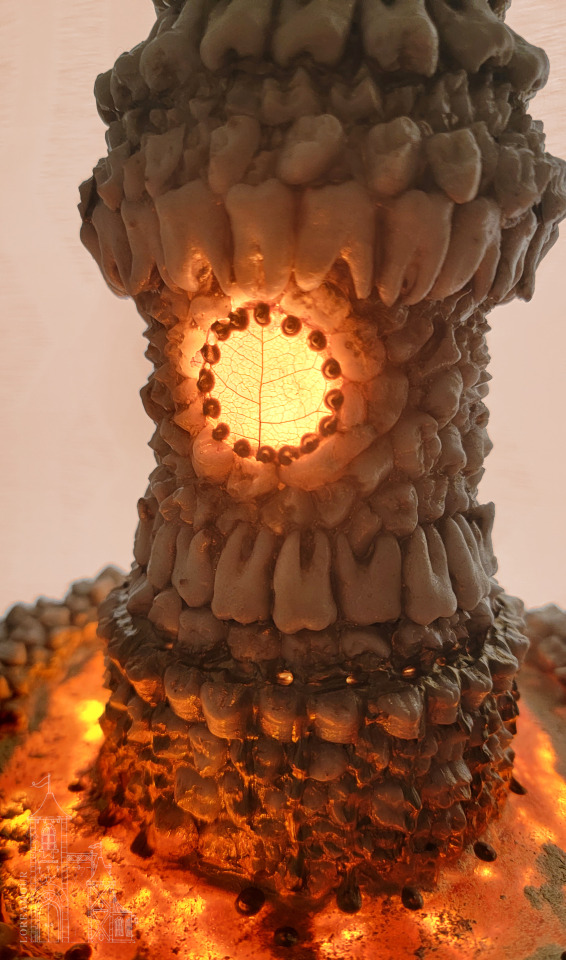


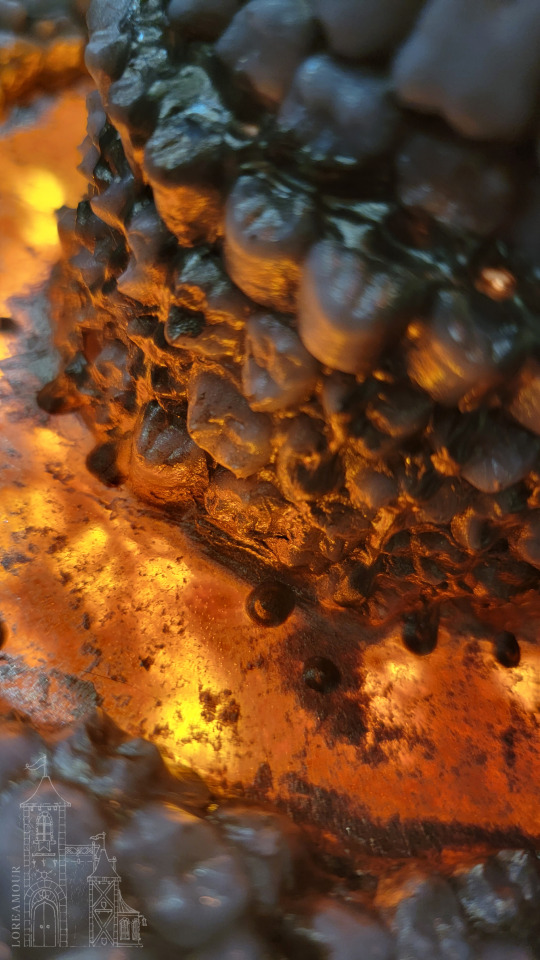
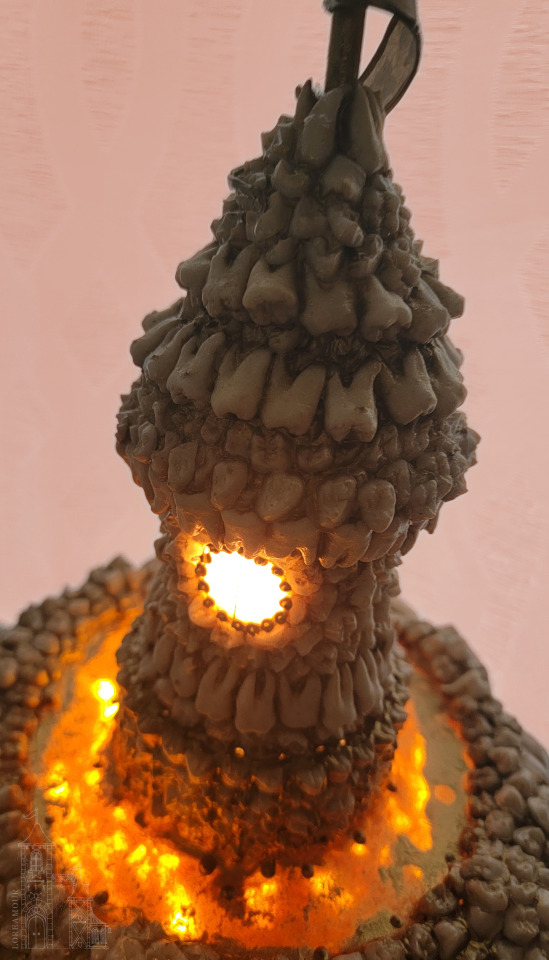

The Tooth Tower 🦷
Ever wonder what the tooth fairy does with your teeth? Well this Tiny Tower may answer that very question.
With fillings being turned to mortar and the rest used to fill the boiling moat, this new addition to the Tale of the Tiny Towers scavenger hunt at Loreamour events took quite some time to complete, and was made using molds from real wisdom teeth.
You can find the other towers on the Loreamour Patreon page, or at future Loreamour events.
If you ant to see how this tower was created, we'll be posting a Patreon exclusive work in progress video next week. https://www.patreon.com/loreamour
Have a spooky Sunday all!
#tooth tower#loreamour#tale of the tiny towers#scavenger hunt#tooth#teeth#wisdom teeth#handmade by archer inventive#plus 1 to wisdom#resin#adventure#spooky stuff#dark fairytale
2 notes
·
View notes
Photo

Zodiac Legacy Challenge for the Sims 3
If you’re like me, I like a good legacy challenge with nice themes/aesthetics to place/plan out with each heir with enough wiggle room for creative interpretations. No. Well I’ve always wanted to do a zodiac legacy challenge but could never find the rules for TS3 or most of them were made for TS4. So I guess I thought I would just make one then.
This was all made on a whim but it’s a strong whim. So enjoy the whim. “@” me if you use the rules since I didn’t come up with a tag for this.
Credit:
I like to credit @tainoodles‘s TS4 Astrology Legacy as an inspiration/base for this, as well as many others I’ve found online.
A buttload of astrology sites
@starplumbob and @bravetrait for feedback. Thank you alot!
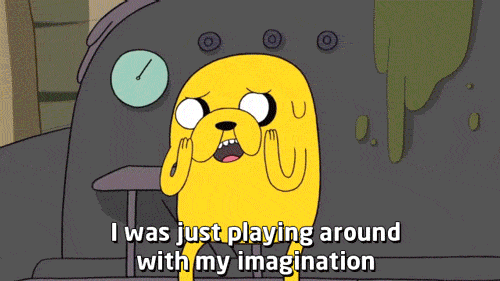
Without further ado
General Rules:
Finish the goals provided for each sign
You can move onto the next generation when all goals are met or you maintain them until the heir has aged up or both. Up to you.
You can start on any sign but you must go in order afterwards.
If I were to start on Leo, I would have to do Virgo next.
You can select any of the careers provided for the generation.
You don’t have to use all the traits assigned to a sign, but 1-2 are required.
You can use colors for aesthetic purposes/berry purposes, but they are not required.
Generation Aries: The Ram
♈︎ - Is everything a game to you? Well of course it is, you’re an Aries. First sign in the zodiac that also might be banned from playing simopoly. We admire a courageous spirit that knows what it wants, is driven, and is bluntly honest with us but can you let some of us, you know….win?! Not everything has to be a competition. Geez
Aesthetic Color(s): Red
Traits: Workaholic, Ambitious, Brave, Hot-Headed
Careers: Firefighter, Athlete, Military, Sports Agent
Goals:
Excel and reach the top of their career.
Fall In love and marry their first love fast
Has to do something athletic once a week
Master the athletic and handiness traits
Have them battle someone once a week
Generation Taurus: The Bull
♉︎ - What’s wrong with a little luxury in life. Food, art, sex, and your favorite snuggle blanket made of some high cotton that was not cheap is the lap of luxury for you. You can be really stubborn sometimes but once you set your mind on something, you aren’t changing it. It’s all because you know what’s best for you and nothing else matters. Aesthetic is key but you can also be a little bit greedy with your stuff. Sharing is caring Taurus
Aesthetic Color(s): Earth Tones, Pink
Traits: Natural Cook, Loves the Outdoors, Frugal, Hopeless Romantic
Careers: Gardner, Cook, Nectar Owner
Goals:
Master the cooking and gardening skills
Be best friends with their future spouse before dating
Learn at least 20 new recipes
Must have twins (can have more children than that)
Have very expensive/luxury items worth more than $500 in your home (it’s all about that aesthetic)
Woohoo with your spouse once a day
Generation Gemini: The Twins
♊︎ - Wow, how does it feel to be a twin. You look every bit like each other except for your dual personalities. Charming and youthful, you both are ahead of the curve as your quick wit and curiosity keeps you moving forward in life. You have alot of skills and talents and love communicating your ideas with others. Just remember where the brakes are at , as some of us can’t keep up. Tough luck you say.
Aesthetic Color(s): Yellow, mint green, Orange, neons
Traits: Charismatic, Childish, Genius, Schmoozer
Careers: Teacher, Writer, Private Investigator, Magician
Goals:
Both twins have to be heir
Have a very close relationship with your twin
Master 5 skills, including charisma
Spend most of their YA dabbling in different careers before deciding on one in their adult years.
Have multiple lovers before choosing/finding the one
Have to teach their children all of their skills and help them with their homework
Generation Cancer: The Crab
♋︎ - Why so crabby? I’m sorry had to throw that one in there. You tend to be a loyal compassionate creative person who wears their heart on their sleeve. Sometimes that sleeve might be drenched in your tears as you can be considered a little bit moody but we love you Cancer. You sense what a person is feeling and you help them through it. What a great lover and friend you are!
Aesthetic Color(s): Light Blue, Gray, Orange
Traits: Nurturing, Family-Oriented, Over-Emotional, Brooding
Careers: Sculptor, Daycare Profession, Resort Owner/Bed&Breakfast
Goals:
Sim must have a full relationship bar with their significant other before proposing
Have a lot of handmade items in your home
Have 5 children
Master the sculpting skill
Be best friends with all their children.
Get out of the house once a week
Generation Leo: The Lion
♌︎ - Royalty must be in your blood cause obviously you are the Queen/King and we are all just your royal subjects. With a mighty roar, you demand your spotlight and capture our attention with your spontaneous passionate heart. We follow your lead, my liege. For you will not make us forget it!
Aesthetic Color(s): Gold, Purple
Traits: Snob, Brave, Dramatic, Star Quality
Careers: CEO, Actor, Singer
Goals:
Live in a mansion/large house with more than 4 bedrooms
Become a five star celebrity
Marry a big time celebrity
Go on a big dates with your lover/spouse at least once a week
New Me each week - go to the spa and change your boring outfit at least once a week
Master the social networking skill
Generation Virgo: The Virgin
♍︎ - The modest stylish Virgo is always the hardest worker that delivers the best because they expect the best. You love to serve others and always pay attention to details with such an organized perfection towards the things you do. But sometimes that perfection creates high expectations of yourself and let’s just say judgement and criticism is not your color.
Aesthetic Color(s): Green, Brown, White
Traits: Perfectionist, Perceptive, Neurotic, Neat
Careers: Doctor, Journalist, Bookstore clerk
Goals:
Have a part-time job, make straight A’s, and join a club as a teenager
Have a college degree
Spouse must be compatible and must share at least 2-3 traits with them.
Can only have woohoo after marriage
House must be clean all the times (no outside help is allowed)
Must learn something new every week
New Recipe, read a new book, learn a new skill, take a class
Generation Libra: The Scales
♎︎ - You’re a giant balancing act, trying to keep everything fair and just. You love being around all kinds of people and also trying to make the world a better place. As much as you are a great mediator and friend, you’re also a great people pleaser. Please take time out of your day not to be around people and just focus on you.
Aesthetic Color: Green, White
Traits: Friendly, Good, Social Butterfly, Party Animal
Careers: Architect, Stylist, Musician
Goals:
Get Married to a sim that is complete opposite of you, then divorce them
Remarry a more compatible sim
Have 10 best friends
Host a party once a week
Complete 3 social opportunities each week
Master the guitar, bass, drums, and piano skills
Generation Scorpio: The Scorpion
♏︎ - Ah the mystery of the Scorpio. You have an intimidating front but behind that is an emotional side only certain people are allowed to see. You’re kinda into some dark occultist stuff and you’re also secretive about things. But you’re a passionate lover that can see love as a game of trials. Just a couple of tests to make sure that this is the right person for who you can finally put your guard down around.
Aesthetic Color: Black, Gray, Red
Traits: Loner, Daredevil, Irresistible, Inappropriate
Careers: Ghost Hunter, Law Enforcement (Forensics/Super Spy), Cemetery,
Goals:
You have a 3 dates policy before asking a sim to be in a relationship with you
Has at least 3 enemies (stop holding grudges)
Become an supernatural/occult sim
Master the martial arts and alchemy skills
Woohoo in 5 different places with your spouse
Do something inappropriate once a week
Generation Sagittarius: The Archer
♐︎ - Sagittarius you love your freedom and the adventures that come with it. You keep choosing the nontraditional path of life because you love to move past your horizons and set your own tradition. You’re brutally honest with everything and can tend to put your own desires above your own needs. As you constantly strive to be independent, you may grow distant from those who care about you the most.
Aesthetic Color: Red, Purple, Blue
Traits: Adventurous, Easily-Impressed, Flirty, Animal Lover
Careers: Adventurer, Equestrian, Photographer,
Goals:
Max out a visa in one country (if WA is applicable)
Have 20 friends
Have multiple partners throughout their life but only commit once as an adult
Have multiple kids from different partners (one has to be from another country if WA is applicable)
Have a horse, dog, cat, and/or other small animals in the house.
Be apart of all 3 social groups (nerd, jock, rebel)
Generation Capricorn: The Goat
♑︎ - Baaahh, you’re a goat. Smart and hardworking, Capricorn, you have a “get stuff done at the expense of your health and other things for the sake of achievement and financial gain” -breathes in- kind of motto. You’re so focused on reaching the top, you forget about the other things in life. But your disciplined perseverance and patience will reward you later in life.
Aesthetic Color: Black, Gray, White
Traits: Workaholic, Unflirty, Computer Whiz, Bot Fan
Careers: Inventor, Bot Arena/Bot Builder, Politician
Goals:
You don’t date until you’re an adult
You don’t get married until you reached the highest point in your career
Master the logic skill and a tech skill (inventing, bot building, or advanced technology)
Have more than 25,000 in savings (without cheating)
Have your children be straight A students throughout the childhood/teen years
Generation Aquarius: The Water Bearer
♒︎ - Individualistic Aquarius runs on it’s own beat. You have a strong desire for change and evolution to come to the world which is why you have a strong sense for social justice in order to make the world a better place. You care for others and that care might cause you to create a system of prioritizing them above all other things. While love is always a nice thing, you just don’t like the idea of being dependent on each other, so it would be nice if you don’t have to commit.
Aesthetic Color: Electric/Light Blue, White, Violet,
Traits: Rebellious, Eco-Friendly, Avante garde, Commitment Issues
Careers: Astronomer, Game Designer, Scientist
Goals:
Master the Street Art skill
Create a Utopia for the future and get a statue in Legacy park.
Have a friends with benefits relationship with your closest friend that results with a child
You never marry
Must live an eco-friendly lifestyle. (no dryer, bikes > cars, salvage everything, grow everything)
Generation Pisces: The Fish
♓︎ - You’re a fish out of water and the last constellation of the zodiac. You’re a dreamer, creative and very intuitive which makes you empathetic and open to other’s feelings. Your symbol is two fish because you tend to constantly swim back and forth between conflicting desires and have a bit of escapism problem . You can’t help it sometimes, it just how it makes you feel.
Aesthetic Color(s): Aquamarine, Sea Green, Lavender
Traits: Artistic, Sailor, Supernatural Fan, Loves to Swim
Careers: Fortune Teller, Lifeguard, Scuba Diver
Goals:
Become a mermaid/master the scuba diving skill
Marry a supernatural sim
Master the painting and writing skills
Have 2 childhood friends and keep in touch with them throughout your lives
Thank you for trying out this challenge. Feedback is always welcomed thing on this challenge.
#this took me 2 days to do#im tired now#will try it out later#sims#sims 3#ts3#ts3 challenge#ts3 legacy#ts3 legacy challenge#zodiac legacy challenge#anime scenery background for the win
848 notes
·
View notes
Text
Quick Ramblings (Anime Edition)
Lately I’ve been watching a lot of older stuff along with some of my backlog from the last two-ish seasons. Nothing this season really clicked with me save for In/Spectre, and I’m waiting for more episodes of the dub to come out before watching it.
All in all this has been a rather quiet season in terms of anime, at least for me. I’ve been a lot more focused on updating fanfics and my original stories for the past two-ish months to really watch any anime that I couldn’t just binge. A few things in Spring has my interest, but that’s Spring...
Anyway... onto the anime Allen’s been watching these past few months.

I’m about half way through Cross Ange and I’m having a blast with it. It’s trashy, it’s riddled with fanservice, it’s premise is honestly stupid, and even the mech battles are a little lacking, but this is an show that knows it’s trashy and over the top, so I don’t have an issue with it.
For a quick summary, Cross Ange is about an Angelise Ikaruga Misurugi, a princess living in a peaceful kingdom of magic-users, at least until its revealed that she had no magical talent and was immediately shunned and exiled from the kingdom as a member of the magic-less Norma caste. Taken from her home and forced to train and work as a mech pilot to kill dragons, she grows into a cold killing machine, with only anger and revenge keeping her going. The story goes into depth about a conspiracy regarding the Dragons, Ange’s origins, and a few other things, but again, I’m at episode 13 at this point.
This is actually my second time watching this show, but stopped after episode 12 last time, mostly because something came up for me IRL and by the time I got back to Cross Ange I realized the dub was out and I was just waiting for that to wrap up. Speaking of, the Dub is pretty good, Ange sounds great, the voice actress being able to do spoiled princess and cold-hearted badass parts of her very well. And the rest of the cast sound good too with Hilda being my favorite, my favorite moments being the ‘on-the-next-episode’ segments, which are hilarious. To paraphrase one of them:
Ange: Hey, it’s been like 10 episodes since someone died, and we just became friends soooo...
Hilda: I don’t want to be friends with you anymore.
That aside, this show it just a fun romp. It’s trashy, it’s over the top, it takes itself almost too serious but not in a way that feels like they’re reaching. Like the seriousness only adds to the cheese of it all. I haven’t finished it yet, but if you want something fun and trashy to watch with your friends, this is definitely the perfect show for it.

Against my better judgement, I decided to look back at the original Fate/Stay Night anime. It’s been years since I’ve watched it and all I remember is a 3D-rendered dragon in a mid-2000s anime. And while that is bad, it shouldn’t be all there is to that anime. As of 10 episodes I can confidently say it’s... not... terrible. A lot of the complaints I remember hearing about this anime seem to be blown out of proportion, at least given the point of the anime I’m at. It’s got plenty of time to make me cringe even more than it has now, but that cringe mostly comes from me being a 26-year-old man watching anime that was probably a lot cooler to 13-year-old Allen that the 26-year-old Allen currently watching this now. For a mid-2000s shounen series, it’s okay. Not great, but okay.
This anime might get a Rambling in itself drafted up when I finish the Gacha Rambling, but for now I’ll just say I have two main issues with this anime: Shirou Emiya, and the World-building of the Fate universe. Shirou feels incompetent not due to how he behaves, but how the writers make him behave. The second issue... requires me to talk about Fate and its writers as a whole, but the short version is I wish Fate/Stay Night wasn’t originally a porn game. It’d make things a lot easier to explain and maneuver around if it wasn’t.
Also, I do prefer this English voice cast to Unlimited Blade Works. The UBW cast if fine, even great, but Sam Riegel as Shirou and Liam O’Brien as Archer is just too perfect a combination to beat.

Finally started watching Ascendance of a Bookworm, an isekai anime about a librarian being reincarnated as a frail, sickly girl. Her one goal being to write and curate books. The only issue being the world she reincarnated into has little in the way of mass-producing books, as neither the printing press or typewriting has been invented year, and paper is rather expensive. So she uses all sorts of schemes, ideas, and plots to try and get books made on some reasonable level, each time a failure, but each failure doing more good in the long term than she thinks.
This anime has a very mellow feel to it. Not something I watch for the plot, but just to see this cute anime girl finally make handmade paper and read a book. The stakes are really that high, the premise is rather simple, but... it’s comfy watch for me. I’m about 4 episodes in and I’m glad to hear we’re getting a second season of this show by the time I finish this first season. Can’t wait to watch more of it.

So Granblue Fantasy got an anime. Two seasons actually, but I only finished up the first one since that was the one that’s fully dubbed. The story revolves around Gran, a young skyfarer wanting to travel the world to see his father. Through this endeavor he gathers many allies and friends, along with a girl named Lyria who saves his life after they first meet. The story takes off from there in a sort of island-of-the-week format. There’s a few other girls like Lyria wanting to meet the other girl that might be tied to her past, or Gran and crew constantly running into the Evil Empire(tm) of this world, but it’s more episodic affair than anything else, each three-ish episodes covering a new island.
I like the anime for its action, but that’s really it. I feel like this was at a time before Gacha games got the more dark and surprisingly in-depth lore and story-writing that games like Girls Frontline and Arknights has, but that makes it more of a comfortable watch than anything. A feel-good anime, but nothing wrong with that.
Also, I can only imagine the amount of hype that happened in episode 12 where all the characters teamed up to take down Leviathan. I don’t even play Granblue Fantasy and I was getting hype when I saw Boxing Grandpa punching debris as projectiles to take out monster fish. This was a fun anime to watch, and I say that as someone who doesn’t play Granblue.

Last up, I’ve been watching BOFURI: I Don’t Want to Get Hurt, so I’ll Max Out My Defense. It’s a fun anime about a young girl named Maple taking a tank build to it’s logical extremely. I won’t lie, I’m watching this because it’s not an isekai and has a pretty simple plot to follow. My favorite part of the anime is when the admins and game devs try to patch the game so Maple’s Tank meta won’t break the game in half... only for her to come up with some new nuttiness that makes her even scarier.
Imagine walking around a field, minding your own business, then you see this tiny shield girl riding a flying turtle while summoning acid rain to kill a mob of monsters without even moving. This woman is unstoppable and I love it.
But yeah, that’s it for anime. Next up, I’ll hopefully have the Gacha Rambling wrapped up by Monday. In the mean time, I’ve got work to prepare for.
#cross ange#fate stay night#ascendence of a bookworm#granblue fantasy#bofuri#your dictator is speaking
55 notes
·
View notes
Text
On Photography by Susan Sontag
In teaching us a new visual code, photographs alter and enlarge our notions of what is worth looking at and what we have a right to observe. They are a grammar and, even more importantly, an ethics of seeing. Finally, the most grandiose result of the photographic enterprise is to give us the sense that we can hold the whole world in our heads—as an anthology of images.
What is written about a person or an event is frankly an interpretation, as are handmade visual statements, like paintings and drawings. Photographed images do not seem to be statements about the world so much as pieces of it, miniatures of reality that anyone can make or acquire.
There is an aggression implicit in every use of the camera.
As photographs give people an imaginary possession of a past that is unreal, they also help people to take possession of space in which they are insecure. Thus, photography develops in tandem with one of the most characteristic of modern activities: tourism.
A photograph is not just the result of an encounter between an event and a photographer; picture-taking is an event in itself, and one with ever more peremptory rights—to interfere with, to invade, or to ignore whatever is going on.
Even if incompatible with intervention in a physical sense, using a camera is still a form of participation. Although the camera is an observation station, the act of photographing is more than passive observing. Like sexual voyeurism, it is a way of at least tacitly, often explicitly, encouraging whatever is going on to keep on happening. To take a picture is to have an interest in things as they are, in the status quo remaining unchanged (at least for as long as it takes to get a “good” picture), to be in complicity with whatever makes a subject interesting, worth photographing —including, when that is the interest, another person’s pain or misfortune.
Still, there is something predatory in the act of taking a picture. To photograph people is to violate them, by seeing them as they never see themselves, by having knowledge of them they can never have; it turns people into objects that can be symbolically possessed.
(...) all such talismanic uses of photographs express a feeling both sentimental and implicitly magical: they are attempts to contact or lay claim to another reality.
Photographs shock insofar as they show something novel. Unfortunately, the ante keeps getting raised—partly through the very proliferation of such images of horror.
To suffer is one thing; another thing is living with the photographed images of suffering, which does not necessarily strengthen conscience and the ability to be compassionate. It can also corrupt them. Once one has seen such images, one has started down the road of seeing more—and more. Images transfix. Images anesthetize. An event known through photographs certainly becomes more real than it would have been if one had never seen the photographs—think of the Vietnam War. (For a counter-example, think of the Gulag Archipelago, of which we have no photographs.) But after repeated exposure to images it also becomes less real.
The photograph is a thin slice of space as well as time.
The ultimate wisdom of the photographic image is to say: “There is the surface. Now think—or rather feel, intuit —what is beyond it, what the reality must be like if it looks this way.” Photographs, which cannot themselves explain anything, are inexhaustible invitations to deduction, speculation, and fantasy.
Photography implies that we know about the world if we accept it as the camera records it. But this is the opposite of understanding, which starts from not accepting the world as it looks. All possibility of understanding is rooted in the ability to say no.
That most logical of nineteenth-century aesthetes, Mallarmé, said that everything in the world exists in order to end in a book. Today everything exists to end in a photograph.
In recent decades, photography has succeeded in somewhat revising, for everybody, the definitions of what is beautiful and ugly—along the lines that Whitman had proposed. If (in Whitman’s words) “each precise object or condition or combination or process exhibits a beauty,” it becomes superficial to single out some things as beautiful and others as not. If “all that a person does or thinks is of consequence,” it becomes arbitrary to treat some moments in life as important and most as trivial.
But essentially the camera makes everyone a tourist in other people’s reality, and eventually in one’s own.
Sander’s complicity with everybody also means a distance from everybody.
The photographer both loots and preserves, denounces and consecrates.
Bleak factory buildings and billboard-cluttered avenues look as beautiful, through the camera’s eye, as churches and pastoral landscapes. More beautiful, by modern taste. Recall that it was Breton and other Surrealists who invented the secondhand store as a temple of vanguard taste and upgraded visits to flea markets into a mode of aesthetic pilgrimage. The Surrealist ragpicker’s acuity was directed to finding beautiful what other people found ugly or without interest and relevance—bric-a-brac, naïve or pop objects, urban debris.
Reality is summed up in an array of casual fragments—an endlessly alluring, poignantly reductive way of dealing with the world.
The photographer was thought to be an acute but non-interfering observer—a scribe, not a poet. But as people quickly discovered that nobody takes the same picture of the same thing, the supposition that cameras furnish an impersonal, objective image yielded to the fact that photographs are evidence not only of what’s there but of what an individual sees, not just a record but an evaluation of the world.
Everyday life apotheosized, (...)
Increased familiarity does not entirely explain why certain conventions of beauty get used up while others remain.
Traditionally associated with exemplary models (the representative art of the classical Greeks showed only youth, the body in its perfection), beauty has been revealed by photographs as existing everywhere. Along with people who pretty themselves for the camera, the unattractive and the disaffected have been assigned their beauty.
The camera can be lenient; it is also expert at being cruel. But its cruelty only produces another kind of beauty, according to the surrealist preferences which rule photographic taste.
(“Beauty will be convulsive,” Breton wrote, “or it will not be at all.”)
Because each photograph is only a fragment, its moral and emotional weight depends on where it is inserted. A photograph changes according to the context in which it is seen: (...)
As Walter Benjamin observed in 1934, in an address delivered in Paris at the Institute for the Study of Fascism, the camera is now incapable of photographing a tenement or a rubbish-heap without transfiguring it. Not to mention a river dam or an electric cable factory: in front of these, photography can only say, ‘How beautiful.’ … It has succeeded in turning abject poverty itself, by handling it in a modish, technically perfect way, into an object of enjoyment.
“This photograph, like any photograph,” Godard and Gorin point out, “is physically mute. It talks through the mouth of the text written beneath it.” In fact, words do speak louder than pictures. Captions do tend to override the evidence of our eyes; but no caption can permanently restrict or secure a picture’s meaning.
“A photograph is a secret about a secret,” as Arbus observed. “The more it tells you the less you know.” Despite the illusion of giving understanding, what seeing through photographs really invites is an acquisitive relation to the world that nourishes aesthetic awareness and promotes emotional detachment.
Cartier-Bresson has likened himself to a Zen archer, who must become the target so as to be able to hit it; “thinking should be done beforehand and afterwards,” he says, “never while actually taking a photograph.”
“A photograph is not an accident—it is a concept,” Ansel Adams insists. “The ‘machine-gun’ approach to photography—by which many negatives are made with the hope that one will be good—is fatal to serious results.”
For Ansel Adams “a great photograph” has to be “a full expression of what one feels about what is being photographed in the deepest sense and is, thereby, a true expression of what one feels about life in its entirety.”
Just to show something, anything, in the photographic view is to show that it is hidden. But it is not necessary for photographers to point up the mystery with exotic or exceptionally striking subjects.
Robert Frank’s credo: “There is one thing the photograph must contain, the humanity of the moment.”
But while photographers are perpetually urging each other to be bolder, a doubt persists about the value of realism which keeps them oscillating between simplicity and irony, between insisting on control and cultivating the unexpected, between the eagerness to take advantage of the complex evolution of the medium and the wish to reinvent photography from scratch. Photographers seem to need periodically to resist their own knowingness and to remystify what they do.
It is not altogether wrong to say that there is no such thing as a bad photograph—only less interesting, less relevant, less mysterious ones.
Our irrepressible feeling that the photographic process is something magical has a genuine basis. No one takes an easel painting to be in any sense co-substantial with its subject; it only represents or refers. But a photograph is not only like its subject, a homage to the subject. It is part of, an extension of that subject; and a potent means of acquiring it, of gaining control over it.
One can’t possess reality, one can possess (and be possessed by) images— (...)
To possess the world in the form of images is, precisely, to reexperience the unreality and remoteness of the real.
The point of the standard portraits in the bourgeois household of the eighteenth and nineteenth centuries was to confirm an ideal of the sitter (proclaiming social standing, embellishing personal appearance); given this purpose, it is clear why their owners did not feel the need to have more than one. What the photograph-record confirms is, more modestly, simply that the subject exists; therefore, one can never have too many.
We have a modern notion of embellishment—beauty is not inherent in anything; it is to be found, by another way of seeing—as well as a wider notion of meaning, which photography’s many uses illustrate and powerfully reinforce. The more numerous the variations of something, the richer its possibilities of meaning: (...)
The world is “one” not because it is united but because a tour of its diverse contents does not reveal conflict but only an even more astounding diversity. This spurious unity of the world is effected by translating its contents into images. Images are always compatible, or can be made compatible, even when the realities they depict are not.
Two attitudes underlie this presumption that anything in the world is material for the camera. One finds that there is beauty or at least interest in everything, seen with an acute enough eye. (And the aestheticizing of reality that makes everything, anything, available to the camera is what also permits the co-opting of any photograph, even one of an utterly practical sort, as art.) The other treats everything as the object of some present or future use, as matter for estimates, decisions, and predictions. According to one attitude, there is nothing that should not be seen; according to the other, there is nothing that should not be recorded.
Cameras are the antidote and the disease, a means of appropriating reality and a means of making it obsolete.
Your photography is a record of your living, for anyone who really sees. You may see and be affected by other people’s ways, you may even use them to find your own, but you will have eventually to free yourself of them. That is what Nietzsche meant when he said, “I have just read Schopenhauer, now I have to get rid of him.” He knew how insidious other people’s ways could be, particularly those which have the forcefulness of profound experience, if you let them get between you and your own vision. —Paul Strand
If I could tell the story in words, I wouldn’t need to lug a camera. —Lewis Hine
The creative photographer sets free the human contents of objects; and imparts humanity to the inhuman world around him. —Clarence John Laughlin
New forms in art are created by the canonization of peripheral forms. —Viktor Shklovsky
Life itself is not the reality. We are the ones who put life into stones and pebbles. —Frederick Sommer
It is no accident that the photographer becomes a photographer any more than the lion tamer becomes a lion tamer. —Dorothea Lange
Like chess, or writing, it is a matter of choosing from among given possibilities, but in the case of photography the number of possibilities is not finite but infinite. —John Szarkowski
As I progressed further with my project, it became obvious that it was really unimportant where I chose to photograph. The particular place simply provided an excuse to produce work … . you can only see what you are ready to see—what mirrors your mind at that particular time. —George Tice
The camera is a fluid way of encountering that other reality. —Jerry N. Uelsmann
I’m always mentally photographing everything as practice. —Minor White
The weight of words. The shock of photos. —Paris-Match, advertisement
It was photography that first put into circulation the idea of an art that is produced not by pregnancy and childbirth but by a blind date (Duchamp’s theory of “rendez-vous”).
4 notes
·
View notes
Text
[FGO Fan Servant Redux] King Sejong the Great (Genderbent)
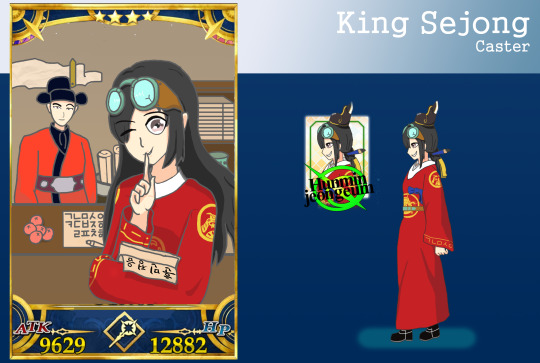
안녕하세요!
This is a remake of last year’s attempt at making a fan Servant, intended for Hangeul Day to celebrate his legacy. (2 days late...) Probably the only Korean with an actual chance of making it into FGO, if DW ever allows that.
Introducing, King Sejong the Great! Genderbent, of course. Because this is Fate, what were you expecting? (I know it’s not completely historical, but it makes for a fun story.)
Name: King Sejong the Great
Class: Caster
Origin: Korea – Joseon Dynasty (1400s)
Alignment: Lawful-Good
Type: Man
Bio: Curiosity. Generosity. Spite. The 4th King of Korea’s Joseon Dynasty.
An insatiable thirst for knowledge, both scientific and magical, and knack for inventing that led to the kingdom’s first royal research institute. An all-giving kindness for her downtrodden people that weakened her status and health. A pure spite for the nobility, inheritance from her father and reinforced by tragedy. She sought to bring meritocracy onto an already stagnant society. Welfare for the poor. Knowledge to all. For in her eyes, all were genuinely equal.
She who utterly shattered the status quo and changed the course of a nation with just one invention, personally handmade by the King herself. Hangeul, a written alphabet for her people that even a peasant could learn in a week. An invention that may have saved them centuries in the future.
She truly earned the title of ‘The Great.’
[Skills, Additional Sprites, and Lore]
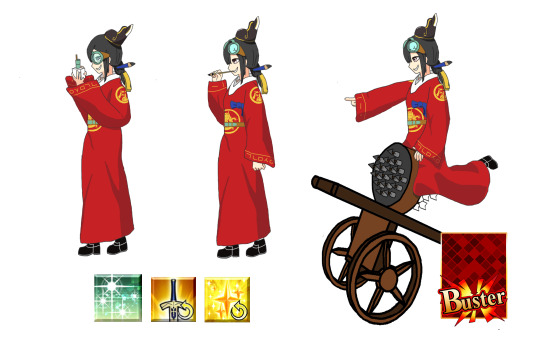
Class Skills
Territory Creation Rank A-: The Hall of Worthies, her kingdom’s first Royal Research Institute, which contained the King’s personal workshop and gave birth to many creations.
Item Creation Rank B: Was personally involved in the creation of Hangeul and many other projects at the Hall of Worthies in the fields of agriculture, astronomy, warfare etc.
Personal Skills
Patronage B: Served as patron to the Hall of Worthies, when she wasn’t busying herself there already. Heavily believed in meritocracy and held the belief that anyone, regardless of status or lineage, could succeed if given the chance. Personally, she handpicked a peasant for the position of Royal Engineer, a true embodiment of her beliefs.
Charisma C: Wildly popular amongst the populous, and able to persuade the fickle Royal Court, regardless of how many times she pissed them off.
Humanitarianism A: Improved literacy nation-wide. Supported paternity leave for both mothers and fathers. Introduced tax reform to reduce burden on famine-stricken areas. Funded many inventions to help improve citizens’ livelihood. She truly loved her people, no matter the costs.
Rapid Words of Casting EX: Invented an entire alphabet for the express purpose of easier and faster reading and writing. Duh?
Entertainment Revision EX: Gains access to skills she does not normally possess. Stronger the more dramatic and flashier the skill is. Similar to Imperial Privilege. (Blame K-Drama.)
Quotes
Edison: Anyone can learn my alphabet in a week. But moving pictures need no introduction. This would have been so useful for so many reasons! Show me more films, Mr Haechi!
Nobunaga: ...For both our sakes, that ‘monkey’ of yours better not show his face to me.
Shakespeare: This is the epitome of western entertainment? Fascinating. You know, I too dabbled in poetry a bit. Perhaps we can share notes?
Touta: The people are the roots of a nation, and those roots should be well-fed so as to create a peaceful nation. That rice bowl of yours is truly beautiful. May I look inside..?
Archer Gil: How could a king who should rule over all people and all things in the country with impartiality treat those of low birth any differently from the way he treats others? I am willing to bow my head towards my people if needed. What say you?
Babbage: ...I want that! To the Hall!

Bond 1: The third child of the third King Taejong (태종), three generations separated from their dynasty’s founder Taejo (태조). Ido was the apple of her father’s eye, her curiosity and (properly timed) rebellious spirit catching his eye, but was initially ignored regarding inheriting the throne. However, her two older brothers abdicated the throne to separate themselves from their father’s bloody legacy of murdering all his relatives and many more to maintain his power. With that, the path was cleared and Ido took to the throne upon her father’s surprisingly peaceful death, taking the name Sejong for herself. Contrast to the previous king’s blood-soaked reign, Sejong devoted herself to her people and to improving quality of life throughout the nation, even establishing the Hall of Worthies to advance the field of agriculture, astronomy, warfare etc. with her patronage and personal participation. She did inherit her father’s dislike for the nobility, and for good reason.
Bond 2: She did not care for social norms and promoted meritocracy, holding the belief that if anyone, regardless of status or bloodline, could accomplish anything if they were giving a chance to prove themselves. Her embodiment of this belief would be Jang Yeong-sil (장영실), a former peasant-turned-Royal Engineer and close confidant. Having heard rumours of his cleverness, she personally invited the son of an escort to the palace, where he managed to impress the King. Excited, she took him under her wing, despite the protests of the nobility. Nevertheless, he would prove himself a worthy ally, helping to create independent advancements in the fields of astronomy and meteorology using his knack for inventing. Bonding over their love of the pursuit of knowledge, he and the King shared a very close friendship, one plagued with hijinks, ‘SCIENCE!’, and ink-soaked robes. Her trust in him was absolute, even willing to forgive him immediately when one of his inventions proved faulty and injured the test subject… who just so happened to be the King herself. Unfortunately, the nobility, jealous of the inventor and fearful for their own positions, seized upon this opportunity, having him tried and imprisoned in spite of the King’s protests.
A betrayal unlike no other. A reminder of the callousness of the Royal Court and of her fragile power.
Bond 3: Noble Phantasm: [훈민정음 – 한글]
The Proper Words for the Instruction of the People.
Rank: EX
King Sejong’s most influential creation. The one that would forever earn her the title of ‘The Great’. Developed in secret at the Hall of Worthies, its very existence alone had the potential to put even a king’s life in danger. Penned by the King personally, it was a scientifically-designed featural alphabet with 17 constants and 11 vowels, created to replace the ill-fitting Chinese characters that had been in use up to this point, in spite of Korea having had a separate spoken language for centuries. Designed for ease of reading and writing, even a peasant could learn in a busy week, an afternoon for a noble. Upon its completion, it was initially announced to the Royal Court, who opposed its very existence. Even those loyal to the crown protested, fearful that a literate populous would prove unruly and rebellious. In spite of, or perhaps because of the protests of the nobility, it was released on October 9, 1495, immediate adopted by the public.
Bond 4: Literacy reached an all-time high. It would kickstart a literary Renaissance that would last for generations, as even the peasants, now literate, could participate, partaking in others’ adventures while sharing their own experiences. Even the nobility, initially disdainful, would later adopt it, both in private and public affairs. But their warnings were right, in a way. An educated populace with ease of communication and plenty of grievances (for future kings) meant many rebellions to come. But it also united a nation. There were no true boundaries between the rich and poor, city and rural. All could communicate to one another, and thus all were made equal. Whether they wanted to be or not.
It may have even saved Korea completely. During a time of both China and Japan pushing and pulling the nation apart, especially during Japan’s forced occupation and colonization, Hanguel allowed the culture and history of Korea to be safely preserved, when it might otherwise have been lost to history, losing them their future as a nation. They prevailed, all thanks to an alphabet anyone could learn, and were restored their heritage.
Bond 5: She claimed to have lived a sheltered life in the palace, but her love for her people far exceeded that of someone who only saw them from above and beyond stone and wooden walls. Nevertheless, she truly saw all as equal, never dismissing a complaint just because it came from a peasant or allowing people with power to abuse those who were underneath them. Sadly a quality lacking even to this day... She is one of only 2 Kings of Korea to have earned the title ‘The Great’ and for good reason. Wise beyond her years and even her society, she devoted everything for her people.
“The people are the roots of a nation, and the roots should be strong so as to create a peaceful nation.”
#FGO#Fate Grand Order#fan servant#OC#servants I want in Fate#Please excuse my poor drawing skills#Hangeul#King Sejong#genderbend
2 notes
·
View notes
Text
AFFORDABLE SKELETON TOURBILLON WATCHES BY JAPANESE WATCHMAKERS AGAINST LUXURY WATCH INDUSTRY
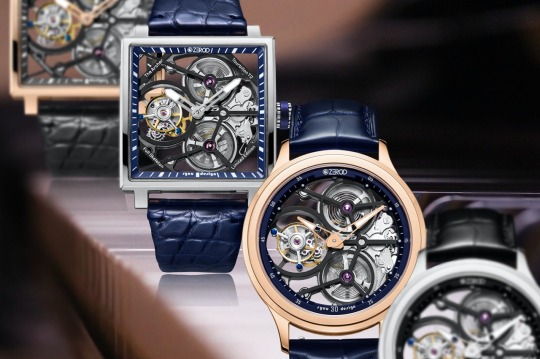
A good skeleton tourbillon watches can cost as much as a small yacht. ZEROOTIME’s watches, on the other hand, look just as luxurious, but at 1/100th the price.
The Tourbillon has a pretty interesting history. Invented more than 200 years ago by Abraham-Louis Breguet, a Parisian watchmaker, the tourbillon’s purpose was to fight off the pesky effects of gravity on a pocket watch’s intricate movement. Given that pocket watches were often in one of two positions (vertical in a pocket or horizontal on a surface), their delicate inner mechanisms would suffer from unilateral drag caused by the earth’s pull. To circumvent this, Breguet devised a small cage in which to mount the most important components – the escapement and balance wheel – and had it constantly rotate so as to negate positional errors. He called it a “tourbillon”, meaning “whirlwind” in French, and earned a patent for it in 1801.
Today, however, the term Tourbillon is relegating to the most luxurious of brands. Giving its incredibly ornamental nature (and its immensely intricate construction). Luxury brands often charge a ‘premium’ for adding tourbillons to their timepieces. Often hundreds of times more than what the timepiece should actually cost. The watchmakers at Japan-based ZEROOTIME are challenging that notion with their affordable Skeleton Tourbillon Watches. By relying on crowdfunding (where you circumvent barriers like retail costs, brand markups, showroom fees, expensive exhibitions). And delivering to-order watches directly to passionate consumers. ZEROOTIME’s been able to make and sell watches at their ‘true cost’.
Their 2020 series, titled The Archer, comes in two styles, the T1 Alpha with its circular body. And the T2 Square, sporting a square body. Both watches boast of an elegantly bare skeleton-design that lets you see the artistry underneath the dial. The watches showcase the tourbillons at the 9 o’clock position (which is rather rare, given most watches prefer to put it at the 6 o’clock position). And have double-springs located at 1 o’clock and 5 o’clock positions. Giving the watch a power reserve of 72 hours.
In the pursuit of creating a watch that’s as skeletal as possible. The Archer series boasts a transparent rim around the watches too. The case, with its sparingly minimal design, comes made from 316L Stainless Steel. And is capping on the top and bottom with Sapphire Crystal displays. That let you observe the tourbillon’s choreographed dance. The rim of the watch sports a crystal glass ring too. Letting you see the movement from the side too. Giving you an unusual view of the tourbillon that’s rare to come by in watches. Each watch comes with a Nightglow Lumionva coating on the hand as well as the markings around the incredibly slim rim. And when the hand reaches the 3 o’clock position, the skeletal frame and hand look almost like a bow and arrow. Leading to the series being fittingly named ‘Archer’.
The two watches within the Archer series are limited to just 500 units each. This helps the watchmakers at Zerootime plan their supply chain like clockwork (for the lack of a better term!). And allows them to narrow the cost of each watch down to the exact dollar needs to keep the company in the green. While allowing patrons to receive high-quality Japanese-built timepieces. The circular and square-shaped watches come in two styles – a silver skeleton-body matches with a blue handmade leather strap. And a golden skeleton body complementing by a black handmade leather strap. With a $2,000 price tag, the Archer series are probably the most reasonably (or rather, fairly) priced Skeleton Tourbillon watches. Each watch even comes with a 2-year warranty and sits upon a leather cushion inside its premium wooden case (with beautiful Rolls-Royce-inspired doors). That also doubles as the warranty certificate.
Read the full article
0 notes
Photo
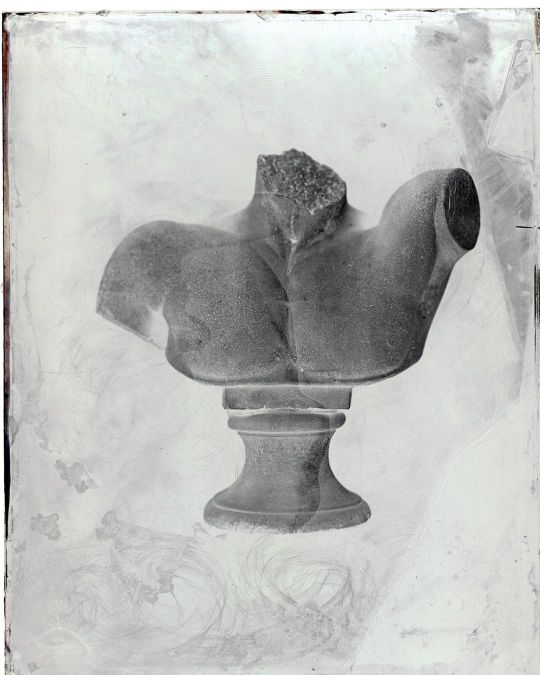
Excavating archives_22 Wet Plate Collodion negative Rockport, Maine, USA, 2013 *Wet Collodion Process* The wet collodion negative was invented by Frederick Scott Archer in 1851. When a glass plate is coated with collodion, the image becomes a negative, and can be reproduced easily on photographic paper. Interesting fact: Archer did not patent the wet collodion process based on his belief in sharing the medium without restriction and encouraging photographic production. #analog #alternativeprocess #altprocess #experimentalphotography #alternativephotography #wetplatecollodion #wetplate #collodionprocess #darkroom #handmade https://www.instagram.com/p/CJAffnIJexY/?igshid=18fq3qz68c3s2
#analog#alternativeprocess#altprocess#experimentalphotography#alternativephotography#wetplatecollodion#wetplate#collodionprocess#darkroom#handmade
0 notes
Text

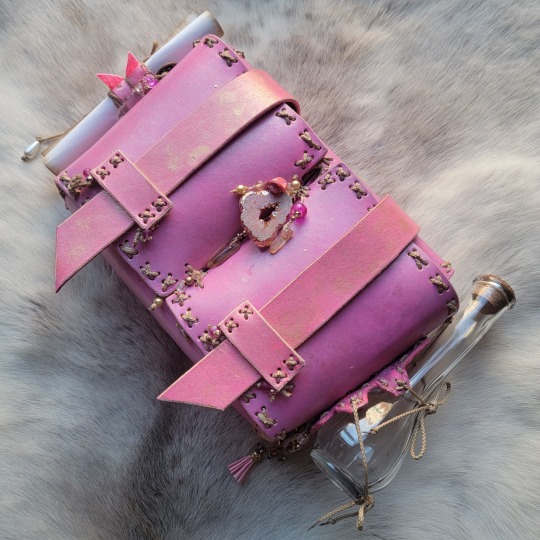
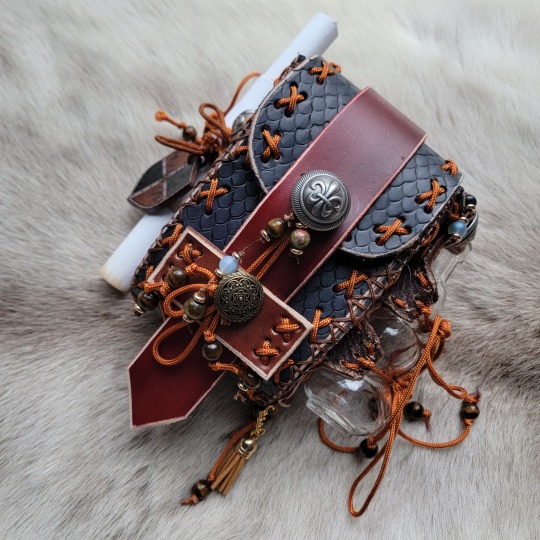



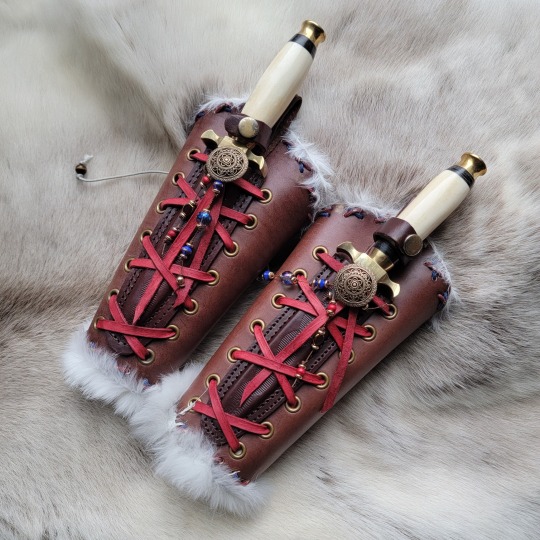
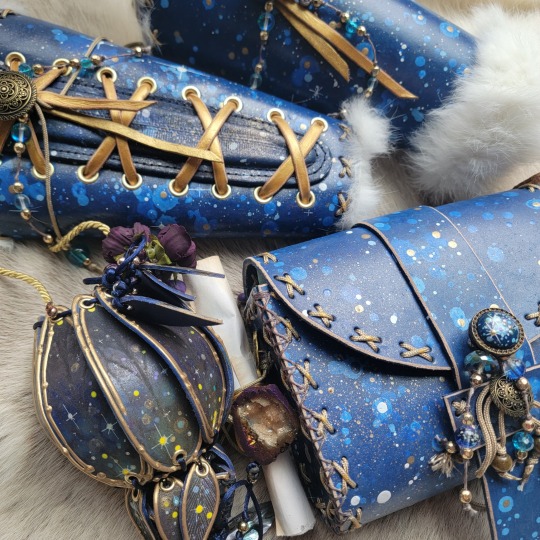


With less than 48 hours of 2023 left, I wanted to take a look at a few of my favorite adventure gear designs from the year. :)
Thank you to all the adventures who visited the shop either online or at faire. ❤️🧡💛💚💙💜
Just a quick reminder that you have until New Years Monday to save 15% off all Limited Edition items in the shop, so it's a perfect time to snag some new gear for the new year :)
https://www.etsy.com/shop/ArcherInventive
Wishing you all a wonderful weekend.
#adventure pack#adventure gear#fantasy fashion#wearable art#handmade#archer inventive#small buisness#2023 creations
2K notes
·
View notes
Text
A Brief History of the Brough Superior SS100 – The World’s First Superbike
A Motorcycle Superior to All Others
George Brough was a man who had a love of motorcycles and a social intelligence that enabled him to put his finger on the pulse of what would be attractive to Britain’s upper classes. This meant he was able to offer them a niche product that would sell well, despite being highly priced.
In the 1920s and 1930s British society was still very class conscious, something that the country has retained even until the present day. So George Brough set out to create not only a motorcycle that was actually superior to all others, but one that would be a fashion statement for his wealthy clientele. He set out to create the motorcycle equivalent of the Rolls-Royce, and he succeeded.
Brough Superior – No Humble Beginnings
George Brough’s father was William E. Brough and he had been in the motorcycle making business since 1908. This provided the young George Brough with a considerable knowledge and expertise base with regards to motorcycles, their use both as transportation and in competition, and their design and manufacture.
He worked in his father’s business and had begun in motorcycle competition when he was still at school in 1906. He won the London to Edinburgh and Back Trial three years in a row; 1910, 1911, and 1912, completing that last year by winning a Gold Medal and prize for best performance in the 1912 Scottish Six Days Trial using a single gear with no clutch and with sealed tool bags. So George had built for himself a well established name in motorcycling circles.
Above Image: A Brough (not Superior) motorcycle
As it turned out George and his father had an argument in 1919 and it proved to be sufficient for George to make the decision to leave his father’s business and set up a motorcycle manufacturing business of his own, which he did that same year. George and his father William had quite different views on what would be the best strategy to prosper a motorcycle manufacturing business.
William it seems had a penchant for flat tanks and the horizontally opposed twin cylinder engine much as used by British motorcycle maker Douglas. George on the other hand wanted to embrace the modern style of motorcycle powered by a large capacity V-twin: something like a Harley-Davidson but with extraordinary attention to handling and quality control to go with the power. In a sense George wanted to build bikes that were in some respects like the Harleys and the Indians, but aimed at the “Rolls-Royce” top end of the market.
It’s important to note that at this time Indian and Harley were building somewhat different motorcycles to what they make today. The Indian Motorcycle factory team took the first three places in the 1911 Isle of Man TT and both companies built board track racing V-twin motorcycles capable of over 100 mph – a heady speed in the 1910s.
Brough Superior and “Brough Inferior”
George began his business with a determination to build motorcycles that were “superior”, not only to his father’s machines but superior to every other motorcycle being made: when told that George was going to call his motorcycles “Brough Superior” his father William stated “I suppose that makes mine the Brough Inferior!”
Notwithstanding the family rivalry George was provided with £1,000, his share in the family business and he invested that in purchasing a suitable piece of land in Haydn Road, Nottingham, and on erecting a single story workshop on it.
Above Image: The Brough Superior works, George Brough is on the far left.
In 1919 George made his first Brough Superior motorcycle and then, in time for Christmas of 1920, began offering a model that was purpose designed to stand out from everything else on the market. This first Brough Superior was handmade, like a Rolls-Royce, bespoke, like a London “best” gun or double rifle from the likes of Purdey or Holland & Holland. This was a motorcycle created to appeal to the wealthy upper class, and made to become a fashion icon, having a 1920’s “coolness factor” even before the notion of “cool” was invented.
Its important to mention at this point that George Brough had well developed mature ideas as to what an ideal motorcycle should be: he had been riding in competition since 1906 and had learned a great deal both from experience and from talking with various competitors and makers, so his thinking was well developed. This meant that he had a strong knowledge base and expertise foundation on which to design his own machines. He built the motorcycles he would want to ride. He did not employ “market research”, he already knew what a truly great motorcycle should be whether the market wanted it or not. So he did not follow fashion, he set the fashion and left others in his dust to imitate and try to catch up.
He was fond of quoting from Rudyard Kipling’s “The Mary Gloster”
“They copied all they could follow
But they couldn’t copy my mind
And I left ’em sweating and a’stealing
A year and a half behind.”
George Brough’s first Superior motorcycle followed the design specification he would keep close to throughout the two decades of manufacture. The main engine offering of this first model was a V-twin 986cc OHV JAP (J.A. Prestwich) as were used on a number of other rival motorcycles: the 1921 Coventry Eagle would follow this pattern for example. The JAP engine breathed through an Amac carburetor and was given its spark by an ML magneto.
George Brough had not yet completely settled on the JAP V-twin at that point however and also offered the unusual Barr & Stroud V-twin sleeve-valve engine of 999cc capacity. Although a sleeve-valve engine might sound like a curious option it is worth remembering that the exotic and prestigious Avions Voisin luxury cars of the 1920’s were using sleeve-valve engines because of their silence in operation. In addition to this Brough also offered the Swiss Motosacoche (MAG) IOE engine (Inlet Over Exhaust, which has an overhead inlet valve and a side exhaust valve: otherwise known as an “F” head) in either 733cc or 993cc: a Swiss engine could be sold on the idea that it was “made like a Swiss watch”. The gearbox was a three speed Sturmey-Archer and the bike’s tube steel frame was fitted with Montgomery front forks.
Over the period from 1919 up until 1922 George Brough’s business was still finding its feet and making a name for itself. Various models were made and offered including OHV and side-valve versions of his Mark I, Standard and Sports models of his Mark II, an OHV 500cc, a side-valve 680cc Junior, and a 750cc side-valve.
The observant will already have noticed that George Brough was using major components from other manufacturers, as were most of his lower priced competitors. What then was his justification for the high price of his motorcycles, how did he sell the idea that his bikes were indeed “Superior”?
George Brough was skilled at marketing and he put the effort in to have his parts made to special order, and would go to the extreme of assembling a motorcycle twice; the first build for testing and ensuring all parts fitted perfectly, then the bike was stripped down, painting and parts plating would be done, and it would be finally assembled and tested. His big selling point was superiority in quality control. Just as when you went to Rolls-Royce for a car, or James Purdey & Sons for a gun you knew you were getting the best that money could buy, that no expense had been spared in making it as close to perfect as human engineering can accomplish.
Enter the Brough Superior “Super Sports” Models
It had not been long after he set up his business that George Brough got to work on his ideal motorcycle, the bike that was to become his “Super Sports” model. In his development work he built a very lightweight low framed bike, and installed it with a JAP side-valve in a high state of tune.
He named it “spit and polish” (because he kept it spotlessly clean and polished) and took it to Brooklands where he proceeded to lap the circuit at over 100mph making this the first side-valve motorcycle to accomplish such a feat. Having won a five lap race he got going in a subsequent race but his front tyre parted company with the rim while he was going flat out with the result that George and the bike parted company and George reputedly set a new Brooklands record: that for the furthest slide on one’s backside. Happily for George it was the tyre that failed, not the bike, and he was able to walk away from the crash: as pilots say “Any landing you can walk away from is a good landing”.
Undefeated, and now just a bit more famous, George built another even lighter bike, a bike so lightly constructed it needed external struts from ahead of the crankcase to the rear spindle to ensure it would not bend under engine power when the throttle was opened up. The little beast was nicknamed “Old Bill” after Bruce Bairnsfather’s cartoon character of the First World War.
The racing bikes served the purpose of making Brough Superior into a household name and helped launch the first of the production series, which was ready for production by 1922 and was introduced to the public as the Brough Superior SS80, the “80” denoting that it was guaranteed to achieve or exceed 80mph. Brough had his own in-house test riders who would take each machine out and ensure that it would make its advertised speed in a quarter mile.
The SS80 was powered by a side-valve 988cc/60.3 cu. in. JAP V-twin engine and was made in standard and “De Luxe” versions. The De Luxe SS80 featured rear suspension which was in some ways similar in concept to that which would be seen on the Vincent motorcycles of 1927 onwards.
But the SS80 was not to be the last word in Brough Superior motorcycles: Brough knew that 80mph was not going to be enough to keep up with the competition and thus that he would need to create a model guaranteed to be able to do “the ton” or 100mph.
It was in 1923 that motorcycle journalist H. D. Teague of “The Motorcycle” did a road test of an SS80 and in his article described it as “The Rolls-Royce of Motorcycles”. This was one of the nicest accolades George Brough could have hoped to receive and he promptly began to use it in all his advertising, although being careful to attribute the quote just in case the gentlemen at Rolls-Royce decided to get upset about it.
As it turned out the gentlemen over at Rolls-Royce were a bit miffed and let George Brough know of their discontent. George invited them over to have a look at how Brough Superior motorcycles were made and on the day of their visit the workshop was immaculate, and the Rolls-Royce men were greeted by the sight of nice young men in clean white coats building these “Rolls-Royce of motorcycles” with meticulous care. The Rolls-Royce men were so impressed that they said that George was welcome to refer to his bikes as “The Rolls-Royce of motorcycles”, and so he did.
The Brough Superior SS100
It was a combination of three men, George Brough, engine designer Val Page, and Swiss motorcycle racer and engine tuner Bert le Vack, who’s talents came together to create the next and greatest of the Brough Superior motorcycles. At this point in history, for four years in the early to mid 1920’s, le Vack worked with Val Page at JAP to build a large capacity V-twin, an engine to beat the American V-twins from Indian and Harley-Davidson. While Val Page was the engine designer le Vack was a tuning and fuel blending expert. The project was to build a “Yank Buster” V-twin engine with overhead valves. The resulting 1924 JAP 8/45 was a 986cc OHV V-twin which was tuned by le Vack to become the JAP “Super Big Twin”.
In 1924 Bert le Vack and George Brough put together a motorcycle around a specially tuned 867cc JAP OHV “Super Big Twin” engine. The bike was fitted with parts from other suppliers as were Brough Superior bikes generally including front forks that were straight out of a Harley-Davidson.
In order to ensure this bike would stand out as a Brough Superior George Brough ensured its was fitted with the trademark Brough Superior fuel tank so there was no mistaking what bike it was. This bike was taken by le Vack up to a crisp record breaking 118.93mph at Arpajon. George Brough now had an engine at his disposal that could propel a Brough Superior to at least 100mph, the SS100 was born.
George Brough worked on the SS100 prototype to ensure it was a bike that would handle and stop well. To this end the front and rear brakes were upgraded to drums with decent stopping power. The resulting motorcycle was a work of visual art as well as being one of, if not the, best handling and fastest motocycle’s the world had seen up to that point in history. The SS100 made its debut in the 1925 Brough Superior catalog and was described as being “an exact replica of the Brough Superior ridden by H. le Vack when capturing 9 world’s records including the fastest speeds ever accomplished on a motor cycle – 123 m.p.h. SOLO and 103 sidecar.”
Once the SS100 was established George Brough decided to try his hand at a world speed record. George got together with a man named Freddie Dixon and between them they built a special purpose SS100 on a shortened frame with the newest long stroke JAP V-twin. Freddie Dixon took it for an outing at Brooklands and managed 103mph for five miles. George then took the bike to Arpajon in 1928 to see what he could accomplish. He almost succeeded: he managed a one-way run of 130mph, making him the fastest man on two wheels, but on the return run a piston failed bringing his record breaking to an unexpected end, because to officially obtain a world record a two way run was required. The bike was taken back to Britain and re-built, and then Bert le Vack took it back to Arpajon the following year and achieved a two way run of 129mph, and a new world record.
Brough Superior SS100 – Models and Specifications
The Brough SS100 was offered in three main models; the SS100, the SS100 AGS “Alpine Grand Sports”, and the SS100 “Pendine”. All were fitted with JAP engines up until 1936 when Brough progressively made the switch to Matchless engines. JAP engined bikes continued to be made up until 1938.
The Brough Superior SS100 was fitted with four stroke, four camshaft, JAP OHV 50° V-twin engines from 980cc up to 996cc capacity depending on model variant. As all Brough Superior SS100 bikes were made bespoke to customer order there are many variations possible and it has been said that no two were identical. When a customer came in to order a Brough the process was very much like that experienced by a customer who went to one of London’s “best” gunmakers. The customer was measured as if for a custom gun or Saville Row suit. The shape, length and position of the handlebars and controls were custom fitted to the customer so the bike would feel as if it fit them “like a glove”, because it was made to do so. Other options included such things as an unsprung or sprung frame and various other fitments.
Three main variants of the engine were the JAP 980cc 8/45, the 996cc JTOR-JAP 8/50, and the 996cc JTOS-JAP 8/75 which was fitted to the SS100 Alpine Grand Sports beginning in 1934. The JTOS-JAP 8/75 was known as the “two of everything” because it was fitted with two magnetos and two oil pumps. The use of dual systems was quite common in the highest quality motor cars of the 1920s and 1930s and so such use in the Alpine Grand Sports provided it with an even higher degree of fail-safe reliability. The SS100 engine was mated to a “four stud” three speed Sturmey-Archer gearbox with chain final drive up until 1935 when the change was made to a Norton four speed gearbox.
The frame of the SS100 was a duplex cradle type with the option of either unsprung rear or a Deluxe model fitted with Brough’s patented sprung rear suspension. The front forks were Brough’s modified Harley-Davidson style Castle forks which he had patented in collaboration with Harold “Oily” Karslake.
Every SS100 came with a written guarantee that it had been ridden and tested to confirm it would do 100mph, for a period Bert le Vack was involved in tuning customer’s motorcycles and is known to have worked on some of “Lawrence of Arabia” T.E. Lawrence’s Broughs.
The model up from the standard SS100 was the SS100 “Alpine Grand Sports”. This bike was named after the Austrian Alpine Eight Days Trial and for the year of the SS100’s debut, 1925, George Brough along with Freddie Dixon and Austrian Champion Eddy Meyer competed on Brough Superior SS100’s.
The result of the 1925 Austrian Alpine Trial proved to be most satisfactory for Brough Superior with them winning no less than six cups including the one for “Best Performance”. The SS100 Alpine Grand Sports was fitted with a lower compression ratio engine to ensure it would happily cope with the variable quality of fuel that would be encountered while touring in the 1920s and 1930s: but these bikes were still guaranteed to be able to meet or exceed 100mph in a quarter mile.
The SS100 Alpine Grand Sports was offered with a number of optional extra cost fittings such as dual headlights and large pannier bags, but the sprung rear suspension was a standard fitting on this model as was a small fly screen and a pair of tool boxes.
The model of the SS100 for those looking for speed was the SS100 “Pendine”, named after Pendine Sands in Wales. Pendine Sands was a seven mile beach that provided a hard and almost perfectly flat surface better than many of the roads of the 1920’s. Pendine Sands was used as the track for the Welsh TT motorcycle trials from 1922 onwards and was also the site used by Sir Malcolm Campbell for his successful land speed record attempt in his 350hp Sunbeam record car “Bluebird”, in which he attained 146.16mph/235.22km/hr.
The SS100 Pendine made its debut in 1927 and was normally fitted with a rigid frame (no rear suspension), lightened for racing, typically with no lights, and with an engine in a higher state of tune with a high compression ratio that would require blended racing fuel. Each Pendine model was guaranteed to achieve 110mph in a quarter mile.
The standard engine for the SS100 Pendine was the 981cc JAP KTOR 8/45 twin cam engine with bevel drive magneto. Other engines were used however, the largest of which was an 1,150cc twin carburetor bike made to order for Eddy Meyer in 1927: the larger engine being permitted under racing rules in Austria where Meyer competed with that bike. A common engine for the Pendine was the 996cc JAP JTOR 8/50 producing 73hp @ 6,200rpm.
The Arrival of Vincent HRD, and the Final Version of the SS100
By the time the SS100 had been in production for ten years other motorcycle makers had not been idle. With the establishment of Vincent HRD in 1928 another visionary motorcycle designer, Philip Vincent, entered the scene and he was not one who was going to be playing catch up with George Brough, quite the reverse.
Vincent started out building motorcycles using Phil Vincent’s patented cantilever rear suspension with conventional girder front forks and he used JAP engines predominantly much as George Brough had done up until 1934. In that year Australian engineer Phil Irving joined the company and designed a new engine, resulting in Vincent making their own 500cc single cylinder engines. By 1936 Vincent had created their own in-house 998cc OHV V-twin engine and installed it in a motorcycle so advanced that it would take decades for others to catch up: the Vincent Rapide.
By comparison with the Brough Superior SS100 the Vincent Rapide boasted dual drum brakes front and rear as opposed to the Brough’s single drums, a superior suspension to go with its superior brakes, and a superior engine. The Vincent was built to just as high levels of quality control as the Brough which was not looking superior anymore.
That first Vincent Rapide engine featured external oil lines which led the motorcycle press to dub it “The plumber’s nightmare” and George Brough may have breathed a sigh of relief at that. But we suspect that with the arrival of the Vincent Rapide of 1936 George Brough realized that he was at risk of not being in front of the competition anymore, and that he would have to stop using his favourite Rudyard Kipling quote unless he could come up with a motorcycle that would be superior to everything else once more.
The 1935 Brough Superior SS100 made the move to a new engine, the 1,000cc Matchless V-twin OHV V-twin with a Norton four speed gearbox, but in other respects it was still faithful to the 1924 original. Only 102 of this last model SS100 would be built.
George Brough turned his attention to creating a motorcycle that would be superior to everything else once more and in 1938 unveiled his “Golden Dream” at the London Earls Court motorcycle show. The Brough Superior Golden Dream was powered by an “H” engine, which is essentially two horizontally opposed twin cylinder engines stacked one on top of the other with their crankshafts connected together by gears, this having the effect of providing perfect engine balance as the upper and lower banks of cylinders are counter-rotating. This 988cc engine was mated to either a three or four speed gearbox and shaft final drive.
The frame of the Golden Dream was essentially that of an SS100 but with Brough’s own version of a cantilever rear suspension replaced with a plunger type, while at the front he kept his familiar Harley-Davison-based Castle forks. It would prove to be an expensive failure and was not put into production.
The End of Brough Superior SS100 Production
By 1939 both George Brough and Phil Vincent were forced to turn their wonderfully creative minds away from building superior motorcycles because of the antics of a German with a Charlie Chaplin moustache who somehow managed to persuade the German people to give him absolute power. Lord Aston warned us that “All power tends to corrupt, and absolute power tends to corrupt absolutely” but perhaps because Lord Aston was British the German people did not take notice of his warning, but the British did. The result was World War II and Brough Superior found themselves making crankshafts for beautiful Rolls-Royce Merlin engines while Vincent were tasked with making munitions. The last ten Brough Superior SS100 bikes were made in 1940, and after that there would be no more.
By the end of the war in 1945 both George Brough and over at Vincent both Phil Vincent and Phil Irving, had been thinking about what they would create for the new post-war era. At Vincent the decision was taken to perfect the Rapide and improve on it which resulted in the creation of the Vincent Black Shadow, arguably the world’s first “superbike”, and a bike that was advertised as “the fastest motorcycle in the world”, and that it was.
George Brough took a different route and claimed that he could not find a suitable engine for his SS100, and so had to cease production. But perhaps there’s a story behind that claim: there of course was a British V-twin engine that would have been perfect for the SS100, and that was the Phil Irving designed Vincent V-twin that would power the post-war Rapide, Black Shadow, and Black Lightning. Vincent would very probably have been willing to build and supply engines for Brough Superior, they were willing to make engines for American motorcycle manufacturer Indian and built them a prototype. But George Brough knew that Vincent actually had the superior motorcycle and thus he could not admit defeat and get his engines from them. Instead he decided not to resume motorcycle production, and so the history of one of the most famous of all the motorcycles to emerge from Britain quietly ended.
Above Image: George Brough
Picture Credits: Brough Superior, Bonhams, RM Sotheby’s, JAP.
The post A Brief History of the Brough Superior SS100 – The World’s First Superbike appeared first on Silodrome.
source https://silodrome.com/brough-superior-ss100-history/
0 notes
Text
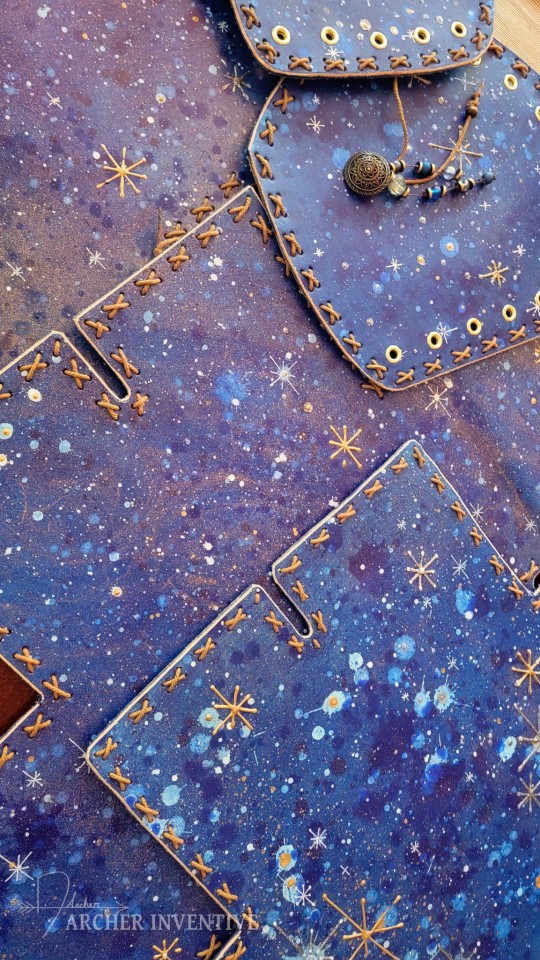
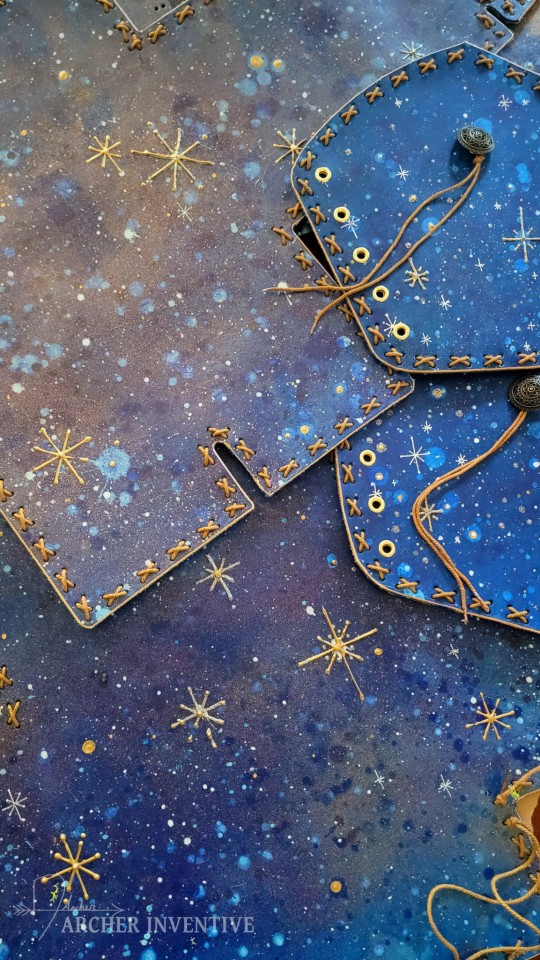
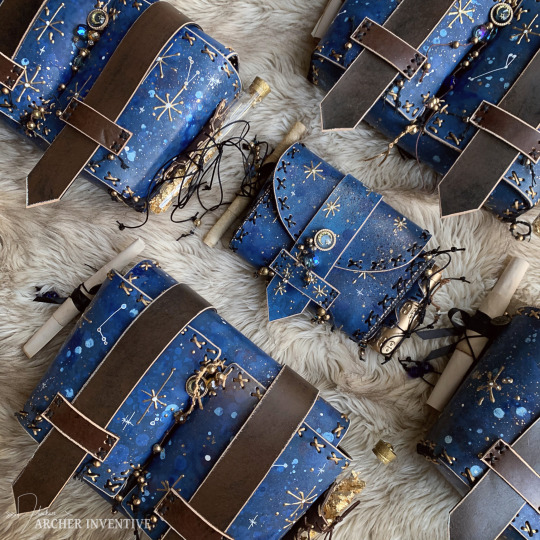
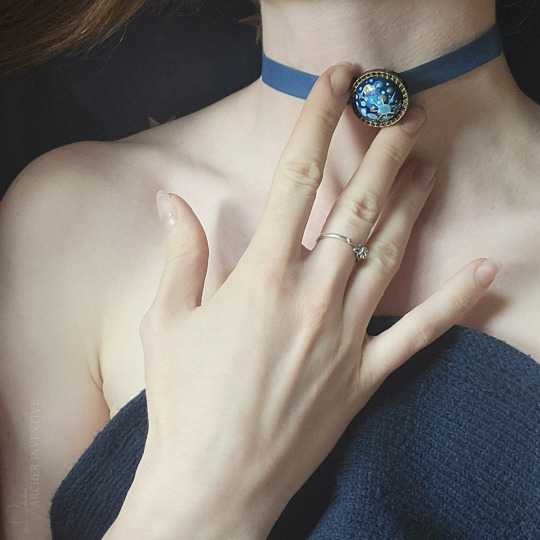



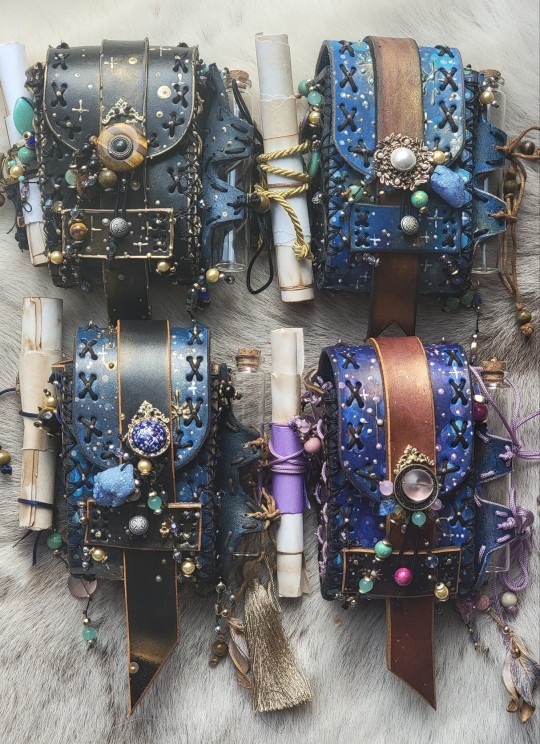


Happy Workshop Wednesday. :)
Fun fact. It takes anywhere from five to six layers of dye and paint to achieve the star patterns on my adventure gear and hours of handstiching to bring them together.
Starting this month, I'll be working on a time-lapse of the process to share with you, so all star themed orders placed this week will get a bonus progress video of their order being made.⭐
https://www.etsy.com/shop/ArcherInventive
Wishing you all a wonderful rest of your week.
Stay magical. 😊 💫🩵🌟
#stars#handpainted#fantasy fashion#mage wear#wearble art#adventure gear#wizzard wear#witch wear#handmade#fashion#archer inventive
729 notes
·
View notes
Text



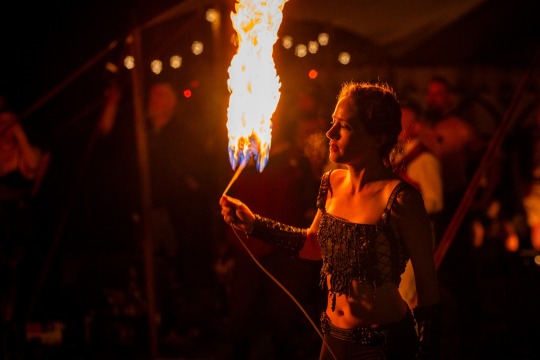
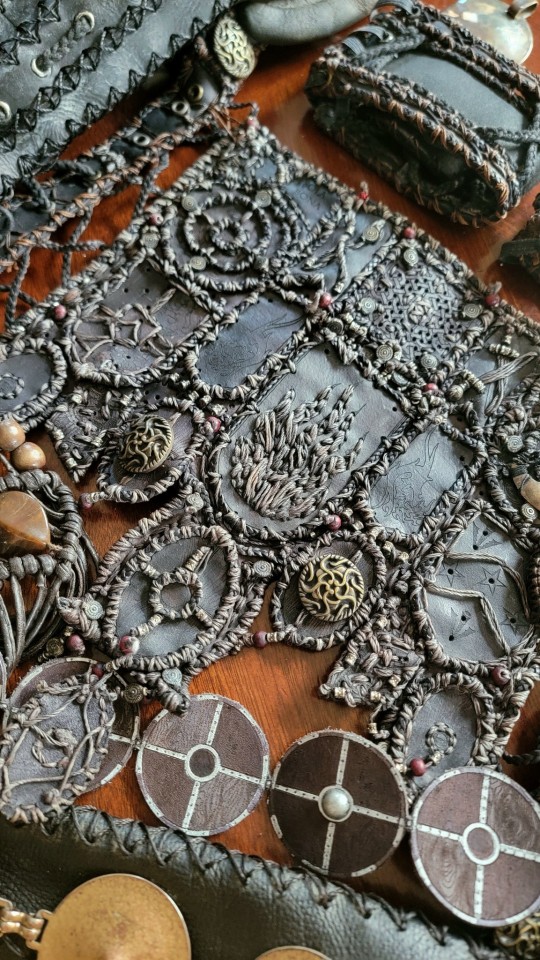


Happy Faire Friday!
For today I thought I'd share a closeup look at some of the work that went into my fire top.
In an effort to stay away from flammable materials, I made it out of scrap pieces of leather i had around the shop and fire tested it before use. :)
I wore it for the first time during last year's faire season, and it's been holding up really well since. That being said, I'm always keeping an eye out for fitting pendants to decorate it with.
Next, it's onto the leg covers and possible mask.
Wishing you all a wonderful weekend. I can't wait to see you guys at this upcoming faire season. ^^
#fire fashion#leather top#handmade#renfaire#renaissance faire#ignition fire troupe#hand stitching#archer inventive
462 notes
·
View notes
Text



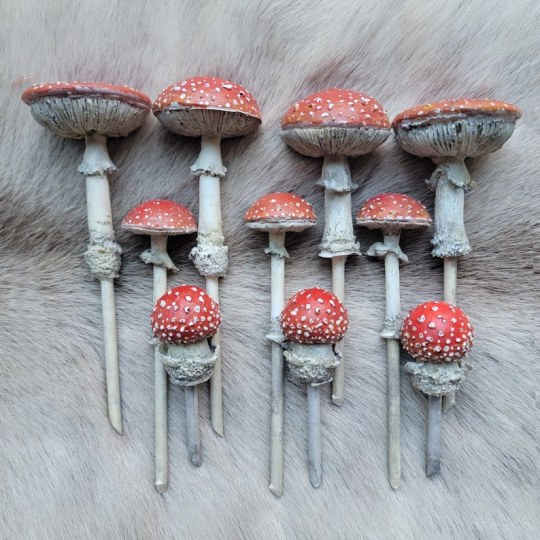



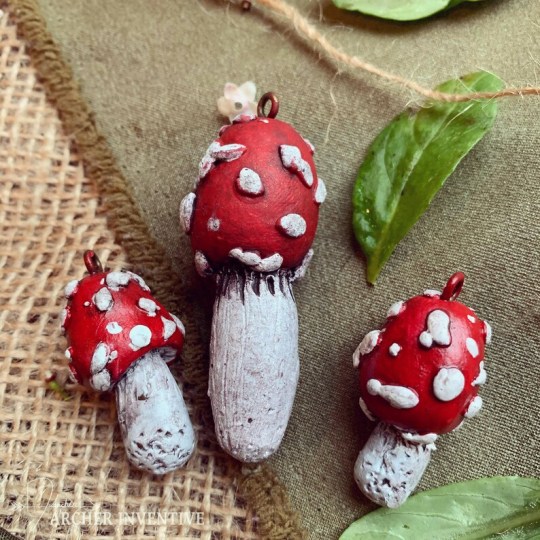
🍄 Happy Mushroom Monday! 🍄
For the next 72 hours, get all mushroom themed items in the shop 15% off. :)
https://www.etsy.com/shop/ArcherInventive
696 notes
·
View notes
Text

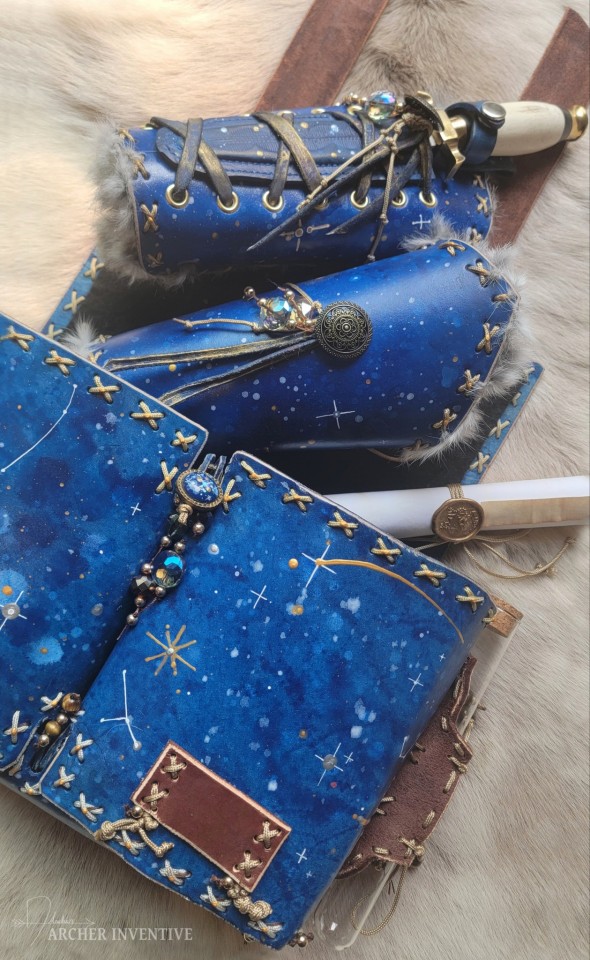





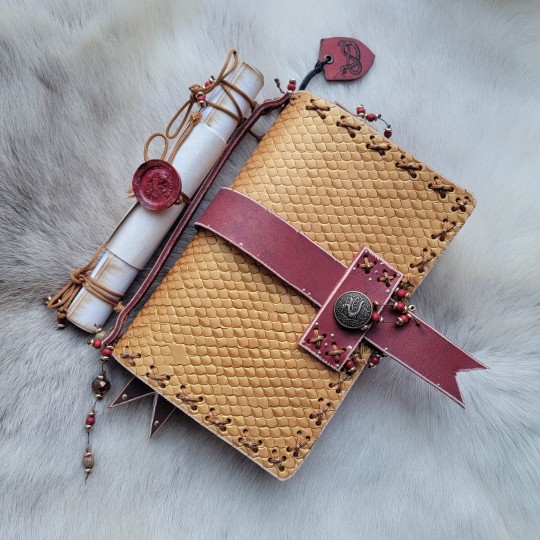


For this Saturday, we have a few examples of the Star, Crystal, and Dragon themed collections in the shop. 🌟
With new themed items coming soon. :)
If there's a theme of items you'd like to see in the shop, please leave a comment, and I'll try to add them to this years lineup.
Best!
https://www.etsy.com/shop/ArcherInventive
#handmade#bags#bracers#journals#and more#medieval#fantasy fashion#leather#wearable art#small buisness#archer inventive
778 notes
·
View notes
Text
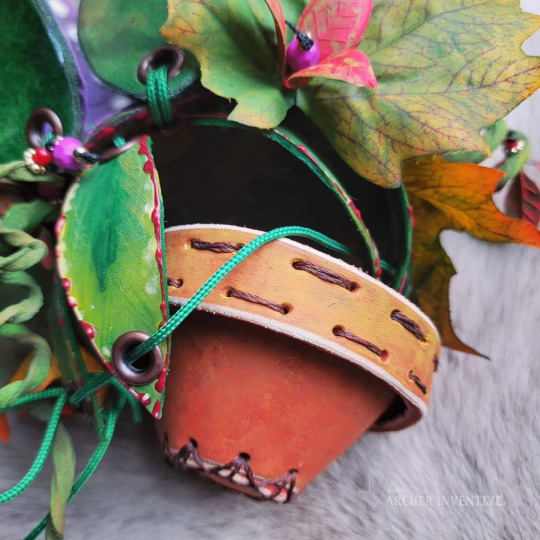
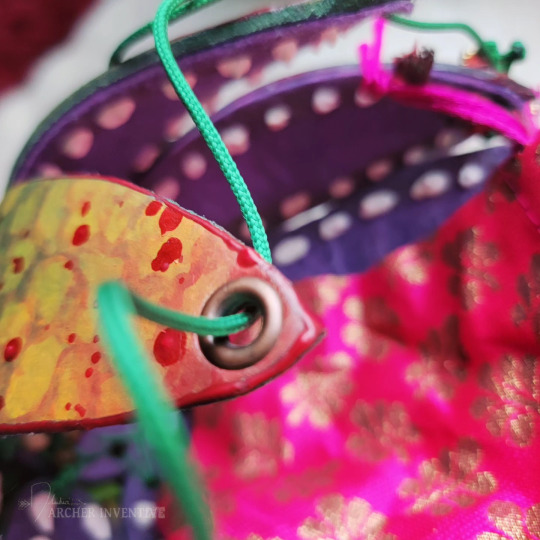
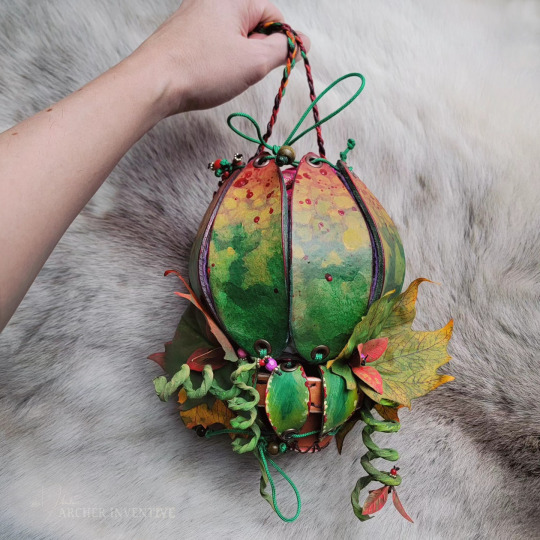

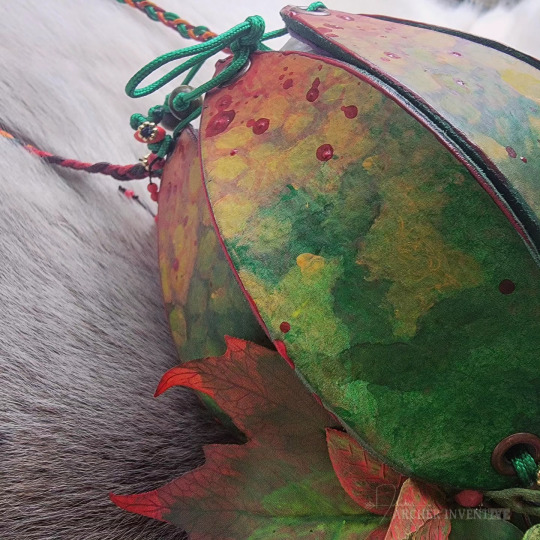
This Bloom Bag just wants one thing, and that's a few drops of blood.
Inspired by a Hollywood classic, this carnivorous plant pouch comes with its own detachable pot for staching those extra secrets.
Have a terrifyingly terrific Thursday all! 💚
🩸SOLD🩸
LIMITED EDITION: Only one available.
https://www.etsy.com/shop/ArcherInventive
#feed me Seymour#carnivorous#plant#bloom bag#handmade#purse#leather#craves blood#might want to take over the world#archer inventive
641 notes
·
View notes
Text

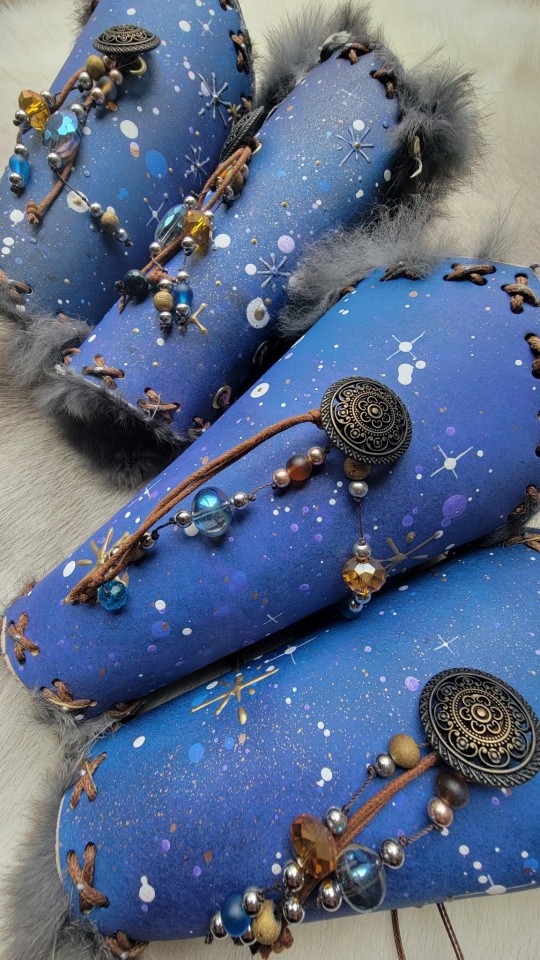





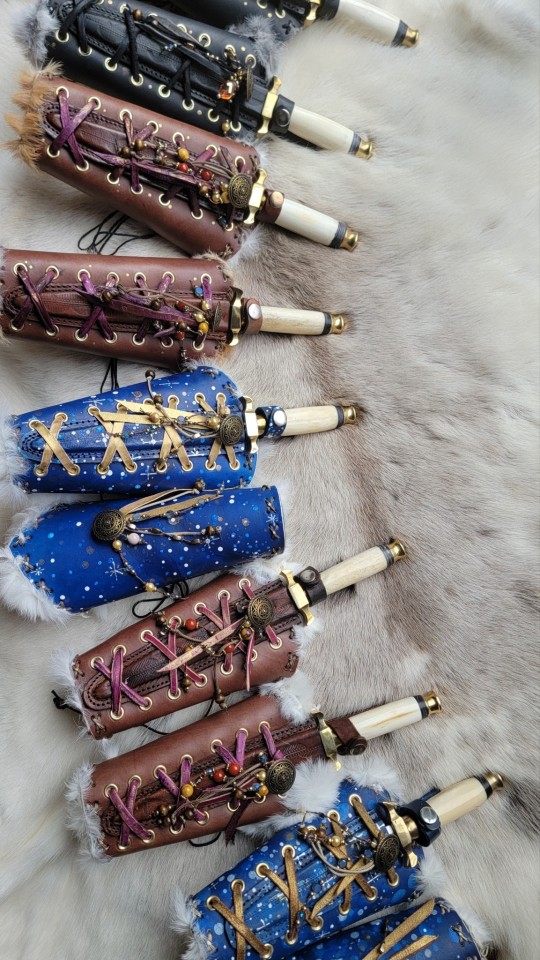

⭐️ Some stars for your Sunday ⭐️
Hello all! I hope your weekend has been treating you well.
As I work on getting the latest batch of star themed orders out, I just wanted to share a few photos of past creations.
You can get your own Starry themed adventure gear at the shop here.
https://www.etsy.com/shop/ArcherInventive
Wishing you all the best. 🩵
#stars#handmade#adventure gear#bracers#pouches#shoulder bag#necklaces#hair pins#wearable art#fantasy fashion#medieval#archer inventive
394 notes
·
View notes